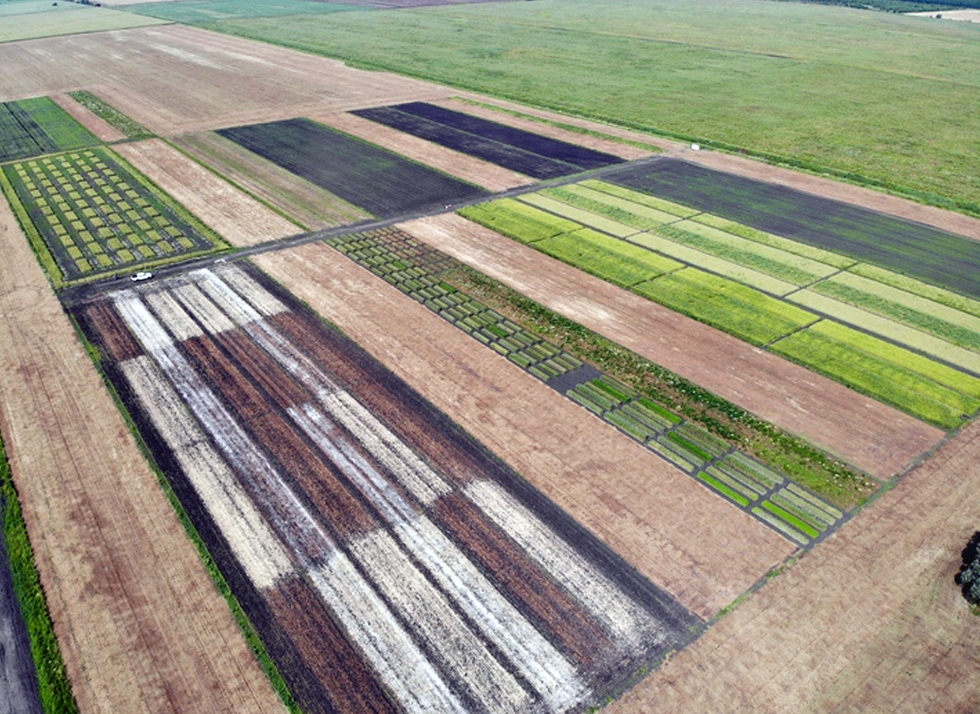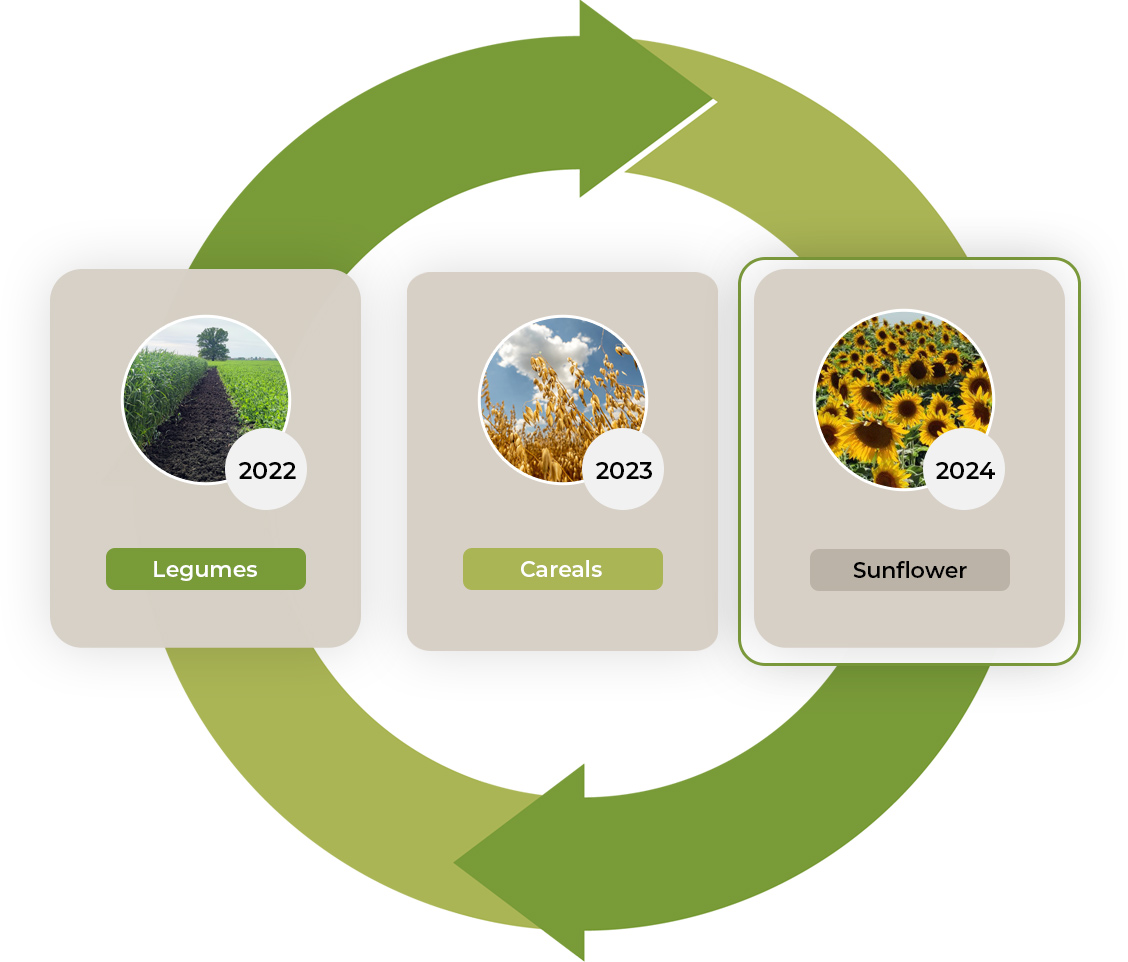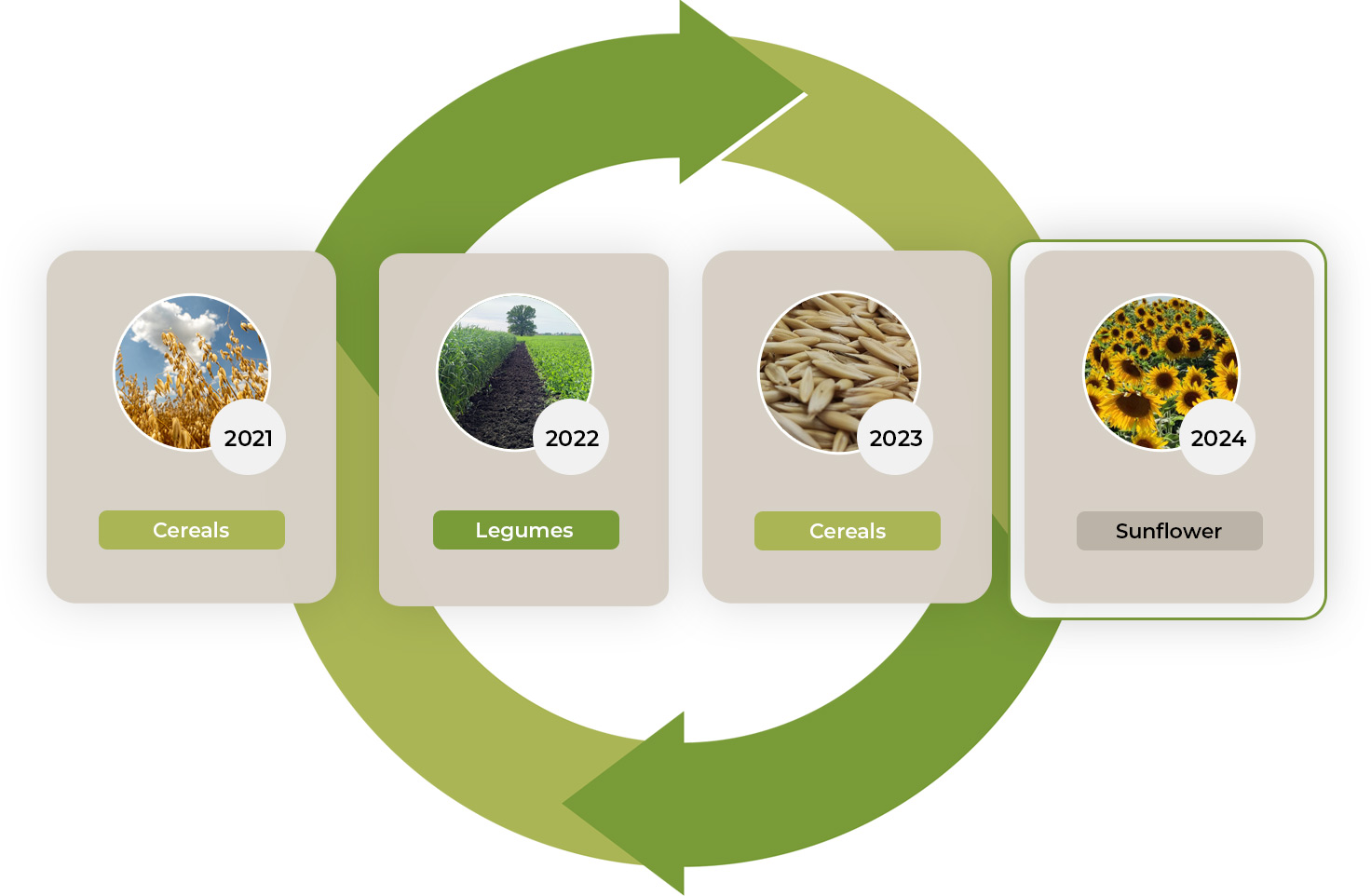Harvest Efficiency Redefined with LoginEKO Farming Software
July 24, 2024LoginEKO Farming Software redefines harvest efficiency, optimizing operations from planning to storage. Soon to be shared globally.
Read articleMulti-year crop rotation is key to creating a sustainable and thriving agricultural landscape, and one of our key priorities.

Just like any other sector or industry, agriculture has evolved over time. Some changes have led to more efficiency, while others have made food more accessible to an ever-growing population. However, these same changes have led us to the point where we are seriously damaging the environment, biodiversity, and our health. One such detrimental practice, over-specialization, could be replaced with an age-old sustainable practice that is crop rotation. Let’s look at what crop rotation is and why we need it.
Crop rotation, an age-old agricultural practice, involves the intentional sequencing of crops over defined periods and spaces to optimize soil health, manage pests and weeds effectively, and enhance overall agricultural efficiency.
Considering that crop rotation has been around for a significant amount of time in human history, its importance in sustainable farming practices cannot be underestimated.
However, the relentless pursuit of increased efficiency in agriculture, focusing on maximizing profit per unit area, has led to the emergence of specialization in production. And so, only the most profitable crops started being cultivated, leading to simplified crop rotation practices. Adding to this was the invention and widespread use of mineral fertilizers, pesticides and genetic modification of plants.
And so, in the industrial agriculture of today we are witness to a single cultivation technology, a standard set of agricultural machinery, and minimal changes in the organization of the process on farms.
While such an approach has enabled us to produce the most food in human history and helps us feed the ever growing global population, it also brought serious consequences for the environment. In fact, conventional agricultural practices mentioned above have contributed to the deterioration of our environment so much that according to FAO, 33% of the Earth’s soils are already degraded and over 90% could become degraded by 2050 if we don’t act. This would mean less and worse quality food for generations to come.
Growing the same crop on the same field over an extended period is known as monoculture. This approach has an extremely negative impact on the yield and quality of the given crop, overall biodiversity, and the health of the soil itself. That is because in monoculture, the plant’s root system absorbs nutrients from the same depth in the soil, in the same proportions, during the same time period. This can lead to an imbalance in soil nutrients as the same plant is constantly requiring the same nutrients at the same soil layer. Moreover, the root system’s exudates often act autotoxic, further complicating the situation. These factors together lead to a phenomenon known as soil fatigue.
Monoculture also provides ideal conditions for the development and spread of plant diseases and pests. That is because the development cycle of certain pests and diseases gets synchronized with a particular crop, so if we keep planting the same crop over and over again, the same pests and diseases will be coming back. Conventional agriculture fights this problem with pesticides. But there is a more sustainable way. Alternating various crops prevents a situation where a specific pest or disease develops and stays over an extended period of time.
The same applies to weeds. Each crop has its companions. In wheat, for example, weed companions are wild mustard, cleavers, and chickweed. The development cycle of these weeds perfectly aligns with the wheat cycle, and their seed bank in the soil is replenished every year. So, by constantly planting one crop type, we also continue having the same weeds. And they influence biodiversity of soil microorganisms, so having the same crops over and over, results in a reduced ability of the soil to mineralize organic matter, a decrease in the population of beneficial microorganisms, and an increase in the population of pathogenic microorganisms.
All these factors together contribute to a serious disruption of soil structure, leading to a reduction in the natural fertility of the soil.
And this is why we need crop rotation.
In some parts of the world, above described principles of industrial agriculture have been slightly adapted to respond to local environmental conditions. For example, in Serbia, specifically the region of Banat with a semi-arid climate and heavy clay soil, a very simple two-year crop rotation was developed alternating wheat, and sunflower. While it might seem that such an approach is a partial solution to environmental challenges, this two-year crop rotation still brings with it all the characteristics of monoculture, and all its consequences.
Within this two-year system, wheat production requires the application of a minimum of 170 kgN/ha from mineral fertilizers, while herbicides are used to control winter weeds. Over time, the number of pesticide treatments has increased to 6-8 times, with the more frequent use of growth regulators. In sunflowers, there is a noticeable increase in the area under so-called “chemical hybrids” that are resistant to herbicides, which conventional sunflowers cannot tolerate. In years with abundant rainfall during sunflower flowering, numerous diseases emerge, white mold, also known as Sclerotinia, being the most dangerous. On plants affected by this disease, a large number of sclerotia is formed. These structures are detrimental because they enable long-term vitality of the pathogen in the soil, which can last up to 10 years.
The most effective way to mitigate the negative consequences that monoculture and two-year crop rotations bring is simple: avoid frequent cultivation of the same crop on the same plot and rotate different crops over time and space, applying multi-year crop rotation strategies.

Therefore, we have taken it as our goal to understand how crop rotation works and what sequences will ensure sufficient nitrogen to achieve satisfactory yields, reduce overall weediness, control the number of pathogens in the plot, and encourage the accumulation of organic matter in the soil.

Now we know what crop rotation is and why we need it. It’s the only way to create optimal conditions for sustainable food production. And that is why, at LoginEKO, we are currently using a 3- and 4-year crop rotation in large-scale farming, while intensively researching the options for a complex 5-year crop rotation and our long-term goal of 6-year crop rotation.
LoginEKO Farming Software redefines harvest efficiency, optimizing operations from planning to storage. Soon to be shared globally.
Read articleWhat if we told you that sunflower seeds you buy were sprayed with 9 active ingredients in pesticides? What if we told you this wouldn't have been necessary?
Read articleLoginEKO's moves into gluten-free farming tapping into rising consumer trends for a healthier market niche.
Read article